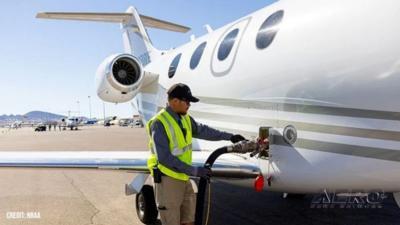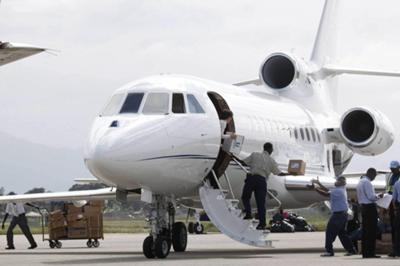Mon, Feb 03, 2025
GAMA and EBAA Study Warns Against Needlessly Restrictive Caps
A recent study revealed that business aviation has a nearly $104 billion impact on the European economy. However, EU proposals to cap short-haul flights and restrict airport slots threaten these benefits. The policies could jeopardize up to €120 billion in foreign investments and 104,000 jobs by 2030.

Commissioned by the General Aviation Manufacturers Association (GAMA) and the European Business Aviation Association (EBAA), the study affirms business aviation’s critical role in European connectivity. Without it, there would be no practical way to link remote areas, efficient medical transportation, or access smaller airports. The sector is also directly tied to upwards of a million jobs throughout Europe.
While one would think that these perks make government agencies want to support business aviation as much as possible, the EU’s new policies seem to be running in the opposite direction. Regulators have introduced proposals to limit short-haul flights and restrict the number of slots available for business aviation flights in some airports.
These changes don’t come without reason; business aviation is generally considered to generate significantly more emissions per passenger than other sectors due to its smaller passenger capacity and shorter flight distances. This fact has created plenty of public backlash and pressure to introduce policy reforms.

This point is where the conflict reaches a stalemate. “Policies that seek to constrain the growth of business aviation create implicit trade-offs between the environmental benefits arising from fewer flights and the foregone benefits associated with business aviation,” the study explained.
The research determined that the EU proposals could risk up to $125 billion in foreign direct investment (FDI) as well as more than 100,000 jobs over the next five years. Instead of these overly restrictive caps, EBAA Secretary-General Holger Krahmer argues, regulators “should focus on policies that support innovation, decarbonization, and competitiveness.”
One step that would satisfy both parties is increasing the utilization of sustainable aviation fuels (SAF). This could assist in decarbonizing business aviation while maintaining the current number of flights and their economic impact.
More News
Pilot Applied Full Aft Stick And Nose-Up Trim, But The Airplane Remained On The Runway Analysis: The pilot reported that a preflight inspection and flight control checks revealed n>[...]
A Few Questions AND Answers To Help You Get MORE Out of ANN! 1) I forgot my password. How do I find it? 1) Easy... click here and give us your e-mail address--we'll send it to you >[...]
From 2022 (YouTube Edition): Before They’re All Gone... Humankind has been messing about in airplanes for almost 120-years. In that time, thousands of aircraft representing i>[...]
Advanced Air Mobility (AAM) A transportation system that transports people and property by air between two points in the NAS using aircraft with advanced technologies, including el>[...]
Aero Linx: MQ-1B Predator The MQ-1B Predator is an armed, multi-mission, medium-altitude, long-endurance remotely piloted aircraft that is employed primarily as an intelligence-col>[...]
 NTSB Final Report: Douglas A-4K
NTSB Final Report: Douglas A-4K ANN FAQ: Q&A 101
ANN FAQ: Q&A 101 Classic Aero-TV: PBY Catalina--From Wartime to Double Sunrise to the Long Sunset
Classic Aero-TV: PBY Catalina--From Wartime to Double Sunrise to the Long Sunset ANN's Daily Aero-Term (07.01.25): Advanced Air Mobility (AAM)
ANN's Daily Aero-Term (07.01.25): Advanced Air Mobility (AAM) ANN's Daily Aero-Linx (07.01.25)
ANN's Daily Aero-Linx (07.01.25)




